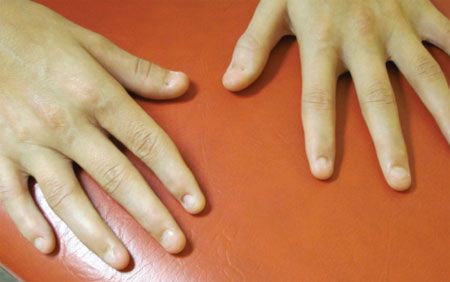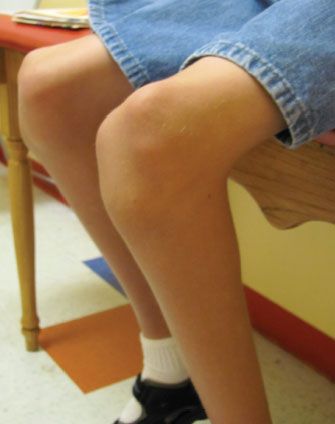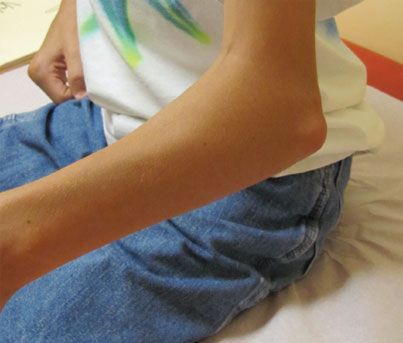Nail-Patella Syndrome
This 16-year-old boy with nailpatella syndrome (NPS) presented for routine follow-up. As an infant, he had surgical correction for clubfeet. For the past month, he had had intermittent bilateral foot and ankle pain and some knee and hip discomfort.

This 16-year-old boy with nailpatella syndrome (NPS) presented for routine follow-up. As an infant, he had surgical correction for clubfeet. His medical care team consisted of an orthopedic surgeon who prescribed supportive orthotics for his knees and elbows; an endocrinologist who prescribed growth hormone therapy for failure to gain weight and height; and a nephrologist who evaluated him regularly for proteinuria and hypertension. A recent visit to the nephrologist made him feel special because he was surrounded by young physicians eager to learn about his condition.
For the past month, he had had intermittent bilateral foot and ankle pain and some knee and hip discomfort. He had been playing golf with his dad. His father and half sister also had NPS. His father underwent kidney transplant for intractable proteinuria when he was a teenager. His half sister had proteinuria and hematuria. His paternal grandmother had diabetes and hypertension.

Examination revealed the characteristic features of NPS: dysplastic fingernails and toenails, and bilateral absent patellas, with no edema or arthritis. He also had a prominent scapula and mild scoliosis. He had external rotation gait, with limited knee and elbow flexion. His hips were stiff, but flexion and extension were well preserved. His elbows and knees were in valgus position. Bone spurs were felt over the posterior iliac crest. Physical findings were otherwise normal.
NPS (hereditary onycho-osteodysplasia, iliac horn syndrome, Turner-Keiser syndrome) is an autosomal dominant disorder that affects mainly the fingernails, bone joints, and kidney and occasionally the eyes and skin. It is rarely associated with colon cancer. The prevalence is 1 in 50,000 births. Boys and girls of all ethnic groups are affected equally. When a parent has NPS, each child has a 50% chance of inheriting the disease-causing mutations. New mutations can occur with no family history of the syndrome.
The fingernails, most commonly of the thumb and index fingers, may be small, discolored, and concave with pitting, ridges, and splits. One or both patellas may be absent or dislocated and have a “square” appearance. Supporting structures (ligaments, tendons) may be malformed. Some patients have bone spurs mainly on the posterior iliac crest and clubfoot. Subluxation of the elbows is not uncommon. Patients require regular screening for scoliosis and lordosis. Proteinuria is a common finding. Associated ophthalmic conditions include open-angle glaucoma (caused by blockage of the outflow of aqueous humor) and iris pigmentary changes (Lester sign).

Kidney biopsy, radiographs, and ophthalmological evaluation can aid diagnosis. Molecular genetic testing of LMX1B, the only gene known to be associated with NPS, is available on a clinical basis.
Treatment depends on the child’s symptoms. Multispecialty interventions may be necessary. Patients may benefit from support groups, such as the National Organization for Rare Disorders (http://www.rarediseases.org). The prognosis is extremely variable; some patients may have mild symptoms, while others may become wheelchair-bound or require kidney transplant.
Recognize & Refer: Hemangiomas in pediatrics
July 17th 2019Contemporary Pediatrics sits down exclusively with Sheila Fallon Friedlander, MD, a professor dermatology and pediatrics, to discuss the one key condition for which she believes community pediatricians should be especially aware-hemangiomas.